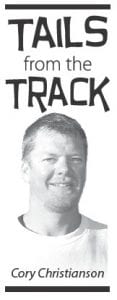I have spent many years defending the term “sport fishing” since there are some people who find it hard to consider fishing a true sport. The comedian, Jeff Foxworthy, once said in a sketch that fishing could not be a sport since you can gain weight while doing it.
Although funny, I disagree with his analogy. I am beginning to feel that technology is changing the sport of angling in ways that are dramatically shifting the advantage to the side of the angler. The underwater world of fish and their habitat used to be a mystery to many anglers, but now with the accuracy of GPS positioning interfaced with high definition underwater scanning, the only decisions left for anglers is what bait to use.
Over the past 20 years of guiding walleye anglers on Saganaga Lake, I have witnessed the advances in angling technology tip the scales in our advantage. Fishing is my favorite sport, and I am guilty of owning, and loving, the latest and greatest tools that aid in my success on the water, but where do we draw the line? When do technological advances make the sport less sporty?
Many other sports have banned certain technological advances in order to preserve the challenge: golf clubs, aluminum bats, and race cars to name a few – so maybe it is time to stop allowing underwater cameras and high definition scanners to locate and harvest fish with.
In general, fish populations across the world have been showing a steady decline and many fisheries are now considered to be non-sustainable if the harvesting continues at the current rate. Minnesota walleyes are near and dear to our hearts, and I have personally battled the Minnesota DNR, unsuccessfully, whenever they have implemented new regulations in our area. This might sound hypocritical on my part, but we share a similar goal which is to preserve the sport for future generations. We simply have different ideas on how that should happen.
When the special regulations were implemented on Saganaga, I disagreed with the specifics (and still do) but agree that the six fish limit is too high. I fought to regulate the number of fish killed instead of restricting the size, and the DNR did both – which means I won half the battle.
There has been some recent chatter that the Minnesota DNR is going to decrease the current statewide walleye limit of six fish to preserve the fishery. Technology has unquestionably affected the fish populations, and regulating technology is much harder than simply regulating the harvest. Let anglers use their super scanners to locate and catch fish, then upload their information to the “Internet cloud” for the entire world to use. Soon there will no longer be any underwater secrets – but there could still be some fish there if we give them a chance to survive.
Cory Christianson has worked as a fishing guide on the Gunflint Trail since 2000. If you have any fishing or wildlife reports or stories to share, send an email to: christiansoncory@hotmail.com or call 218- 388-0315. You can also visit Cory’s website at Gunflintfishingguide.com.



Loading Comments